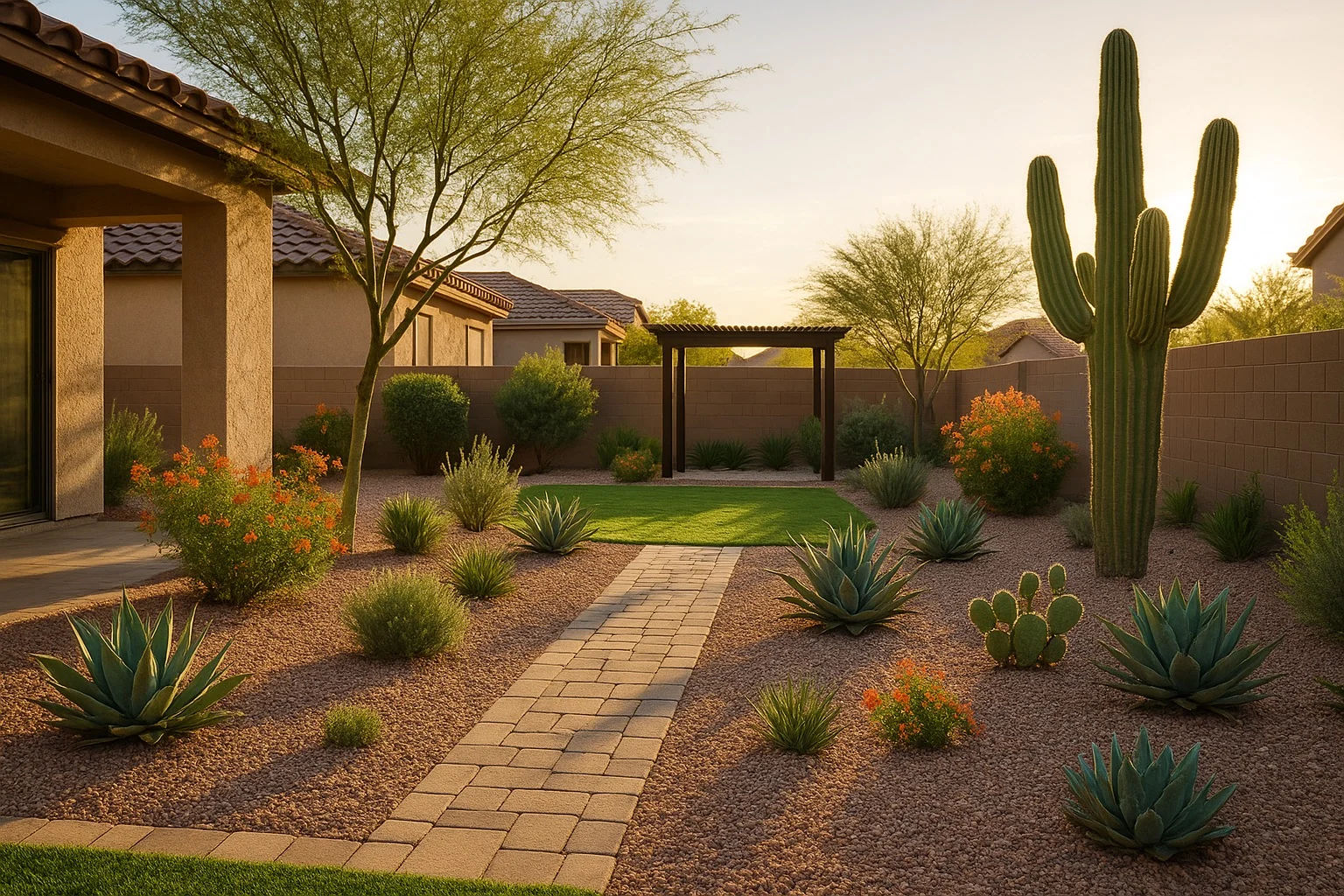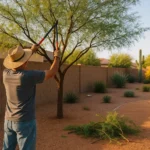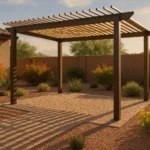As the calendar turns to May, it’s a critical time for desert yard care in Gilbert. As the days grow warmer, the needs of your yard begin to shift. With my experience in water conservation and sustainable soil, I’ll guide you through key areas of focus for this month. Let’s ensure your yard remains a haven, even in the heat of the desert.
Understanding the Soil in May
As May sets in, the soil in your Gilbert yard is going through a significant transition. The moderate temperatures of the winter months have gone, and the intense heat of the Arizona summer is fast approaching. This change in temperature has a direct impact on the soil’s composition and behavior.
At this time of the year, the soil tends to become more compact, making it harder for water to penetrate. This can lead to an inefficient use of water and a lack of essential nutrients reaching the roots of your plants. To combat this, one of the first steps you should take is to aerate your lawn. Aeration involves making small holes in the soil to allow water, air, and nutrients to penetrate. It can be done using a simple garden fork or a specialized aeration tool.
Another crucial aspect to consider is the soil’s pH level. A pH level that is too high or too low can limit the availability of nutrients to your plants. In Gilbert, the desert soil tends to be alkaline (having a high pH level), which can hinder plant growth. To lower the soil’s pH level, consider adding organic matter or applying a soil amendment like sulfur.
Watering Wisely in May
The arrival of May sees rising temperatures and, as a result, increased water evaporation. Consequently, your yard’s watering needs shift. However, it’s important to remember that watering wisely doesn’t necessarily mean watering more. In fact, overwatering can be just as detrimental to your yard as underwatering.
Instead of a daily shallow watering routine, opt for a deep and infrequent watering schedule. This encourages your plants to develop deep root systems, making them more drought-tolerant and resilient in the long run. As a rule of thumb, the top 1-2 inches of soil should be allowed to dry out between watering. While the frequency will depend on your specific yard and plant types, watering deeply once or twice a week is generally a good starting point.
Also, consider the time of day when you water. Watering early in the morning or late in the evening can significantly reduce water loss due to evaporation. If you’re using a sprinkler system, adjust it to avoid watering non-essential areas like sidewalks or driveways.
Protecting Your Plants in May

May is a month when the Gilbert sun starts to show its strength. While some desert plants thrive under these conditions, others might need a bit of help. It’s crucial to provide your plants with some form of shade to protect them from the harsh midday sun.
Shade cloths are a useful tool for this purpose. They can be easily installed over your plants and come in different shade percentages to suit your specific needs. Alternatively, consider using taller plants or structures in your yard to provide natural shade to more vulnerable plants.
Another strategy to protect your plants is to apply a layer of mulch around them. Mulch can help retain soil moisture, keep the soil temperature stable, and prevent weed growth. Organic mulches like wood chips or straw are excellent choices as they decompose over time, adding nutrients back to the soil.
Navigating the Pests in May
May is a time when many pests start to become more active in Gilbert. Aphids, beetles, and grasshoppers are just a few examples of pests that can cause significant damage to your yard. Regular monitoring is key to preventing a full-blown infestation. If you spot any pests, consider using a targeted treatment to control them.
However, not all insects are harmful. In fact, many are beneficial for your yard, playing important roles in pest control and pollination. So, before you reach for a broad-spectrum insecticide, make sure you’ve correctly identified the problem. An integrated pest management approach, which combines different strategies like biological control, habitat manipulation, and use of resistant plants, can be a more sustainable and effective solution.
Remember, each yard is unique and there’s no one-size-fits-all approach when it comes to desert yard care. However, by understanding the changes that come with May and adapting your care routine accordingly, you can ensure your yard remains a vibrant and thriving space. For more detailed advice, check out my previous articles on spring yard care and desert lawn alternatives.






